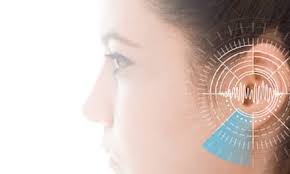
Tinnitus, often described as a ringing or buzzing in the ears, affects millions of people worldwide. Proper assessment of this condition is crucial for effective management and treatment. This article explores the various methods used to evaluate tinnitus, providing insights into the comprehensive approach taken by audiologists and healthcare professionals.
Understanding Tinnitus
Before delving into assessment methods, it’s important to understand that tinnitus is not a condition itself, but a symptom of an underlying issue. It can be caused by various factors, including hearing loss, exposure to loud noises, or certain medical conditions. The subjective nature of tinnitus makes its assessment challenging, requiring a multifaceted approach.
Comprehensive Case History
The first step in any tinnitus assessment is a thorough case history. This involves:
- Detailed patient interviews
- Documentation of tinnitus characteristics (pitch, loudness, duration)
- Identifying potential triggers or exacerbating factors
- Assessing the impact on daily life and overall well-being
Audiological Evaluation
A complete audiological evaluation is essential in tinnitus assessment. This typically includes:
- Pure tone audiometry
- Speech audiometry
- Tympanometry
- Otoacoustic emissions testing
These tests help identify any underlying hearing loss or auditory system abnormalities that may be contributing to the tinnitus.
Specialized Tinnitus Measurements
Audiologie Centre Ouest évaluation acouphènes and other specialized clinics often employ specific tinnitus assessment techniques:
- Pitch Matching: Determining the frequency of the tinnitus sound
- Loudness Matching: Quantifying the perceived intensity of the tinnitus
- Minimum Masking Level: Assessing the lowest level of external noise required to mask the tinnitus
- Residual Inhibition: Evaluating any temporary suppression of tinnitus following exposure to a masking sound
Psychoacoustic Assessments
Given the significant psychological impact of tinnitus, psychoacoustic assessments are crucial. These may include:
- Tinnitus Handicap Inventory (THI)
- Tinnitus Functional Index (TFI)
- Tinnitus Reaction Questionnaire (TRQ)
These tools help quantify the impact of tinnitus on a patient’s quality of life and emotional well-being.
Advanced Diagnostic Techniques
In some cases, advanced diagnostic techniques may be employed:
- Magnetic Resonance Imaging (MRI)
- Computed Tomography (CT) scans
- Angiography
These imaging studies can help rule out structural abnormalities or vascular issues that might be causing tinnitus.
Multidisciplinary Approach
Tinnitus assessment often requires a multidisciplinary approach, involving:
- Audiologists
- Otolaryngologists (ENT specialists)
- Neurologists
- Psychologists or psychiatrists
This collaborative effort ensures a comprehensive evaluation of both the auditory and non-auditory factors contributing to tinnitus.
Emerging Technologies
Recent advancements in tinnitus assessment include:
- Functional neuroimaging techniques
- Electroencephalography (EEG) studies
- Smartphone-based tinnitus assessment apps
These technologies offer new insights into the neural correlates of tinnitus and provide more accessible monitoring tools for patients.
Conclusion
Mastering tinnitus assessment methods is crucial for providing effective care to those affected by this often-debilitating symptom. By employing a comprehensive approach that combines traditional audiological evaluations with specialized tinnitus measurements and psychoacoustic assessments, healthcare professionals can gain a clearer understanding of each patient’s unique experience with tinnitus. This thorough assessment forms the foundation for developing tailored management strategies, ultimately improving the quality of life for those living with tinnitus.






